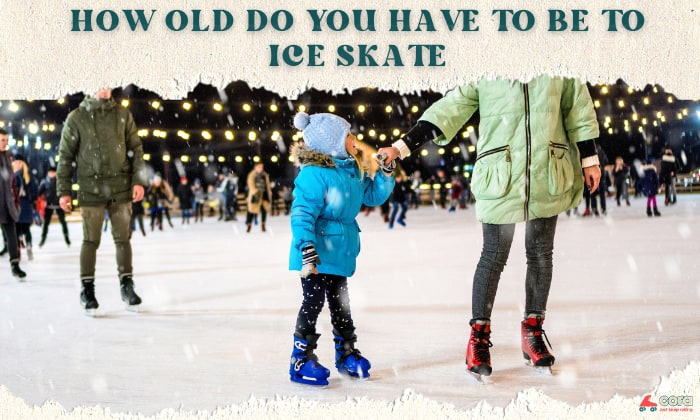Skating on quads is a fun and exhilarating activity that combines fitness and entertainment. In this comprehensive guide, we will take you through the step-by-step process of learning the basics of roller skating.
Whether you are a complete beginner or have some skating experience, this guide on how to skate on quads will help you glide confidently in no time.
Page Contents
Roller Skating Guide: Quad Skating for Beginners
Step 1: Gear Up
Before you start, it is crucial to have the right equipment. Select a pair of quad skates that fit snugly but comfortably. Proper ankle support is essential to prevent injuries.
Along with your skates, gather safety gear, including a well-fitted helmet, elbow pads, wrist guards, and knee pads.
Choose smooth and flat surfaces for learning to roller skate. Uneven or rough surfaces can make practicing more challenging, especially if you are new to skate techniques.
Step 2: Warm up
Failing to warm up and stretch before you get in a rink can lead to muscle strains or injuries. Some basic warm-ups you can try are squats, jump squats, or skater squats. These will help build up your glutes and reduce your chances of getting injured.
Step 3: Balancing & Stance
- Stand in a relaxed position with your feet shoulder-width apart, and knees bent slightly. Do not lean too far back/forward, as you’ll be more likely to fall.
- Keep your weight centered and distribute it evenly between both feet to skate smoothly without falling.
- Slightly squat down, keep your back straight, and do not tense up. Feel the weight distribution on your skate, then practice walking forward slowly.
Focus your gaze on where you are going, not on your feet. Looking ahead helps with balance and maintaining a straight path.
Step 4: Basic Movement
- Begin with gentle pushes—do not push off too forcefully, as you’ll likely lose your balance. Use one foot to push off while the other one should be slightly off the ground so you can glide forward effortlessly.
- Alternate the pushing foot and the gliding foot. Practicing this will help you get comfortable with the rhythm of movement.
- To stop on quad skates, turn your toes inward and apply pressure to the toe stops.
Step 5: Turning
Turning requires a subtle shift in body weight. To turn left, gently lean your weight onto your right foot and guide your left foot in the desired direction.
To turn right, perform the opposite motion. Start with wider turns and gradually practice sharper turns as you build confidence. When turning, lean your body slightly in the direction you want to go. This will help you initiate turns more smoothly.
Begin at a comfortable pace, gradually increasing your speed as you get more confident. Practice gliding, stopping, and turning consistently to build muscle memory.
Step 6: Advanced Techniques
As you gain confidence and become comfortable with the basics, experiment with more advanced techniques.
- Try crossovers by moving one foot over the other in a fluid motion.
- Practice skating backward by pushing off with one foot while the other is behind you.
- Explore spins and other tricks in a safe and open area.
- Experiment with small jumps and hops. Start with simple jumps like bunny hops and progress to more advanced tricks.
Tips for Roller Skate Training
- Practice Regularly: Consistency is key. Set aside regular practice sessions to reinforce your skills, improve your muscle memory, and get good at roller skating.
- Find the Right Surface: Choose smooth and flat surfaces for learning to roller skate. Uneven or rough surfaces can make practicing more challenging, especially if you are new to skate techniques.
- Lean & Turn: When turning, lean your body slightly in the direction you want to go. This will help you initiate turns more smoothly.
- Look Ahead: Focus your gaze on where you are going, not on your feet. Looking ahead helps with balance and maintaining a straight path.
- Fall Safely: Falling is a natural part of learning. Learn how to fall safely by crouching down and landing on your padded areas to minimize impact.
- Learn From Others: Watch tutorial videos online and observe experienced skaters that ride roller skates. Pay attention to their techniques and incorporate their tips into your practice.
- By incorporating these tips into your practice routine, you will be well on your way to becoming a confident and skilled quad skater.
Conclusion
Learning how to skate on quads can be a rewarding experience for kids and skaters learning as an adult. By following this step-by-step guide and dedicating time to practice, you will develop the skills and confidence needed to glide, turn, and perform various tricks on your quad skates.
Remember to prioritize safety, wear proper protective gear, and enjoy the journey of mastering this exciting activity. And on a final note, remember that consistency is key. Set aside regular practice sessions to get good at roller skating.

Harrison is a skating enthusiast who picked up the sport during her student exchange years in Canada. She has been a skating coach for children and teens for 3 years and now holds classes as a freelancer. Harrison entwines her experience leading skating classes in the content published on Cora to help readers fall in love with skating, just like she did.















